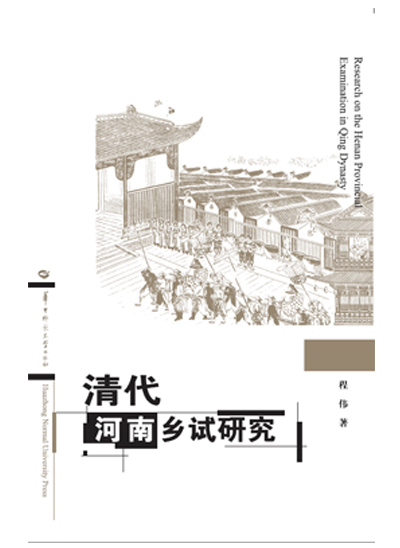Exploring Henan provincial examination in Qing era

Research on the Henan Provincial Examination in Qing Dynasty
As an integral part of traditional Chinese culture, the imperial examination system lasted for more than a millennium, and reached a complete form in the Qing Dynasty (1644–1911). With a long and glorious history, Henan Province was the cultural center of ancient China. This region cultivated generations of talent through the examination system, accumulating a deep imperial examination culture.
The provincial examination played a pivotal role in all levels of the complicated but refined imperial examination system. In his book Research on the Henan Provincial Examination in Qing Dynasty, Cheng Wei, a lecturer from the School of Education at Tianjin University, examines universal elements of the Qing provincial examinations, and also analyzes features unique to the Henan region, from the perspective of institutional history.
In terms of institutional design, the provincial examination within the imperial examination system was the most similar to today's college entrance examination. Qing provincial examinations were organized by each province, similar to the provincial quota admission system for today's college entrance examinations. The date of provincial examinations generally fell on the eighth lunar month, while college entrance examinations today are usually scheduled in June. In both cases, the examinations would be adjusted under particular circumstances. The date of provincial examinations would be adjusted mainly due to wars, weather, and natural disasters, while that of the college entrance examination is mainly affected by disasters and emergencies.
Similar to today's provincial quota admission system for college entrance examinations, Qing provincial examinations implemented a regional quota admission system, which was determined by the imperial court according to the quality of writing, the population size, and the taxation.
Since Henan didn't implement a "guaranteed quota policy" for its sub-regions in the Qing Dynasty, the geographical distribution of Jieyuan (the top winner in a provincial examination) and Juren (successful candidates in a provincial examination) was the result of free competition, directly reflecting the superiority of academic styles in various sub-regions. However, this essentially showcased the levels of economic, social, cultural, and educational development throughout different regions.
Both provincial examinations and college entrance examinations are given special financial support by the court or the government to ensure the normal operation of examination work. In contrast, a considerable percentage of the funding for provincial examinations was used for the renovation, reconstruction, or expansion of the Gongyuan (examination hall), while funding for college entrance examinations is mainly used for the organization and management of the examination.
Liu Liang is a lecturer from the School of Education at Zhengzhou University.
Edited by YANG LANLAN
